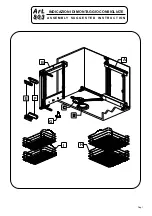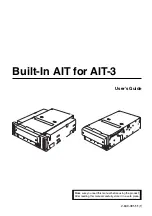
Enclosure Loss Protection
The
enclosureLossProtect
parameter is a boolean switch that you set to turn on or turn off enclosure
loss protection. For enclosure loss protection to work, each disk drive in an subsystem must be on a
separate enclosure. The way in which enclosure loss protection works depends on the method that you
choose to assign the disk drives for an subsystem.
When you assign the disk drives, if you set
enclosureLossProtect
=
TRUE
and have selected more than one
disk drive from any one enclosure, the storage subsystem returns an error. If you set
enclosureLossProtect
=
FALSE
, the storage subsystem performs operations, but the subsystem that you
create does not have enclosure loss protection.
When the controller firmware assigns the disk drives, if
enclosureLossProtect
=
TRUE
the storage
subsystem posts an error if the controller firmware cannot provide disk drives that result in the new
subsystem having enclosure loss protection. If
enclosureLossProtect
=
FALSE
, the storage subsystem
performs the operation even if it means that the subsystem might not have enclosure loss protection.
Enclosure loss protection is not valid when creating logical drives on existing subsystems.
Configuring a storage subsystem with disk pools
A disk pool is a collection of 11 or more disk drives in a Storage Subsystem that have the same spindle
speed, the same security level, and preferably the same capacity to make the most efficient use of the
disk drives.
Using the create disk pool command
Use the
create diskPool
command to create a new disk pool in two ways:
v
Create a new disk pool automatically by entering the type of drives that you want in the disk pool,
and the name that you want to assign to it. Then let the storage management software assign the
drives.
v
Create a new disk pool manually by selecting and assigning drives to the disk pool.
You do not need to assign the entire capacity of the storage subsystem to the disk pool. You can mix both
disk pools and storage subsystems in a storage subsystem.
When you create a new disk pool you want to assign the largest number of drives possible to the disk
pool. The more drives that you have in a disk pool, the more robust the disk pool is, with faster rebuild
times and simplified management requirements. The minimum number of drives that you can have in a
disk pool is 11; the maximum number of drives is as many as required to support the maximum number
of logical drives that a controller can manage. The maximum number of logical drives that a DS3500 and
a DCS3700 support is 512. The maximum number of logical drives that a DCS3700 storage subsystem
with Performance Module Controllers supports is 2048. You must have at least 11 unassigned disk drives
in the storage subsystem to configure a disk pool.
The only supported RAID level for a disk pool is RAID 6, with a stripe width of 10. The storage
subsystem must have a minimum drive count of 11 disk drives to create a pool. The number of drives in
the pool also influences how much reserved capacity is needed in order to redistribute data for rebuilds.
The following table shows the drive counts and the number of disk drives reserved for reconstruction:
Table 4-8. Drive Counts and the Number of Disk Drives Reserved for Reconstruction
Drive
Count
Drives Reserved for
Reconstruction
Comments
11
1
The minimum number of drives in a disk pool is 11.
12 -31
2
4-38
IBM System Storage DS3000, DS4000, and DS5000: Command Line Interface and Script Commands Programming Guide
Summary of Contents for System Storage DS3000
Page 599: ...Appendix A Examples of information returned by the show commands A 3...
Page 601: ...Appendix A Examples of information returned by the show commands A 5...
Page 603: ...Appendix A Examples of information returned by the show commands A 7...
Page 605: ...Appendix A Examples of information returned by the show commands A 9...
Page 607: ...Appendix A Examples of information returned by the show commands A 11...
Page 609: ...Appendix A Examples of information returned by the show commands A 13...
Page 611: ...Appendix A Examples of information returned by the show commands A 15...
Page 623: ...Appendix A Examples of information returned by the show commands A 27...
Page 625: ...Appendix A Examples of information returned by the show commands A 29...
Page 627: ...Appendix A Examples of information returned by the show commands A 31...
Page 651: ......
Page 652: ...Part Number 00W1466 Printed in USA GA32 0961 05 1P P N 00W1466...
















































